
We're here to offer a cheeky breakdown of what solar panel installation might set you back in 2024.
We'll chew the fat on labour and installation costs, natter about extras like types of solar panels, inverters, maintenance and we'll even help you calculate those juicy savings.
And that's not all!
We'll give you the lowdown on how to make the government cough up some cash to help you out.
Lastly, we'll have a look at the current solar market and finally answer that burning question (excuse the pun): is now the perfect moment to splash your hard-earned on solar panels?
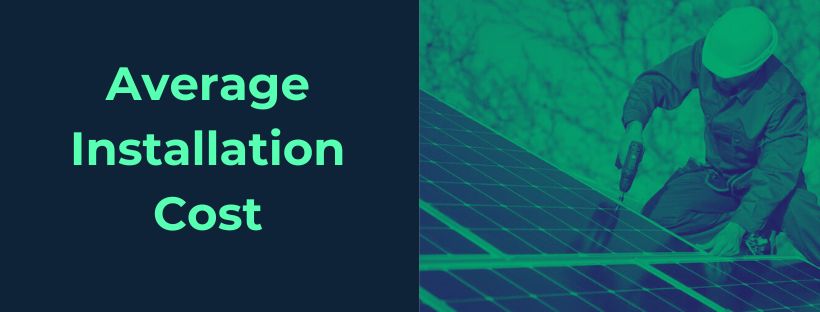
So, you're wondering about the average cost of solar panel installation, are you? It's a bit like a jigsaw puzzle, it greatly depends on the pieces you're putting together.
For a typical 4kW system, you're looking at somewhere between £5,000 and £8,000.
The clever clogs over at the Energy Savings Trust suggest that for a three-bed semi with four occupants, could be about £6,500 [1].
But remember, that's an estimate, so don't take it as gospel!
Let's take a look at some recent solar panel installation quotes from Glow Green:
"The initial system cost of £4,987.98 is expected to be recouped after 11 years.”
The system is expected to generate 3184 kWh per year initially, decreasing gradually as the solar cells degrade. Over the 25 year term of this fnancial projection the total generation is expected to be 74356 kwh, of which 25012 kWh will be consumed on site and 49344 kWh exported.
After adjusting projected costs and benefts for infation, and applying a discount rate of 3.5%, the initial system cost of £4,987.98 is expected to be recouped after 11 years
The total present value of future benefts and costs, using a discount rate of 3.5% per year, is £14,462.81. The cost of the PV system is £4,987.98. The net present value of the project is therefore £8,896.65. A positive net present value is a good indication that the project is fnancially worthwhile.
The Internal Rate of Return is a useful measure for comparing the relative proftability of investments - 11.7% ROI.
| System Size (kW) | Annual Generation (kWh) | 25 Year Term Generation (kWh) | Consumed On Site (kWh) | Exported (kWh) | Cost (£) |
|---|---|---|---|---|---|
| 3.95 | 3,184 | 74,356 | 25,012 | 49,344 | £4,987.98 |
| Item | Quantity |
|---|---|
| JA Solar 395W Mono MBB Percium Half-Cell All Black Short Frame MC4 solar panel | 10 |
| Growatt MIN 3600 TL-X Dual MPPT Single Phase Inverter inverter | 1 |
| Emlite ECA2 extended cover | 1 |
| Label sheet | 1 |
| DC cable warning sticker sheet | 1 |
| Growatt Wireless Shinelink | 1 |
| Tigo Retroft Frame Mounted Optimiser TS4-A-O | 10 |
| AC isolator - KN Newbury 20A 4-pole | 2 |
| DC isolator - KG20-4 | 2 |
| Pair of MC4 connectors | 4 |
| 50m reel of 4mm2 solar cable | 2 |
| Fastensol end clamp (30mm black) | 8 |
| Fastensol mid clamp (30mm black) | 16 |
| Fastensol black end cap | 8 |
| Fastensol portrait fat tile roof hook | 24 |
| Hookstop protector | 24 |
| Fastensol rail splice | 4 |
| Fastensol rail 3.3m | 8 |
| Years | Export payments | Electricity savings | Total |
|---|---|---|---|
| 1-5 | £683 | £1,698 | £2,381 |
| 6-10 | £934 | £2,320 | £3,254 |
| 11-15 | £1,275 | £3,173 | £4,448 |
| 16-20 | £1,743 | £4,338 | £6,081 |
| 21-25 | £2,383 | £5,929 | £8,312 |
Assumptions:
Our fnancial model calculates the benefts of a solar PV installation (such as savings in electricity, or payments for exported electricity) and costs (the initial purchase cost, and any future maintenance costs if entered), over the projected lifespan of the system.
Values are corrected for infation, system degradation, and discount rate - a measure that accounts for the fact that a promise of a monetary sum in the distant future is usually considered less valuable than the promise of the same sum in the near future.
A model is only as accurate as the assumptions it makes.
You should consider whether the values chosen are appropriate for your situation. There are many variables that dictate the fnancial return of a solar installation and we cannot forecast how they may change in the future. This fnancial projection shows a likely scenario for future fnancial returns. Actual returns may vary signifcantly from this forecast.
"The initial system cost of £9,965.36 is expected to be recouped after 12 years.”
The system is expected to generate 5012 kWh per year initially, decreasing gradually as the solar cells degrade. Over the 25 year term of this fnancial projection the total generation is expected to be 117046 kwh, of which 51094 kWh will be consumed on site and 65952 kWh exported.
After adjusting projected costs and benefts for infation, and applying a discount rate of 3.5%, the initial system cost of £9,565.36 is expected to be recouped after 12 years.
The total present value of future benefts and costs, using a discount rate of 3.5% per year, is £26,616.06. The cost of the PV system is £9,565.36. The net present value of the project is therefore £15,508.89. A positive net present value is a good indication that the project is fnancially worthwhile.
The Internal Rate of Return is a useful measure for comparing the relative proftability of investments - 11.1% ROI.
| System Size (kW) | Annual Generation (kWh) | 25 Year Term Generation (kWh) | Consumed On Site (kWh) | Exported (kWh) | Cost (£) |
|---|---|---|---|---|---|
| 5.39 | 5,012 | 117,046 | 51,094 | 65,952 | £9,565.36 |
| Item | Quantity |
|---|---|
| Perlight Delta 415W Total Black solar panel | 13 |
| Solis Energy Storage 5kW Hybrid inverter | 1 |
| Emlite Hybrid Only Bi-directional Meter ECA2 | 1 |
| Label sheet | 1 |
| DC cable warning sticker sheet | 1 |
| Solis Wif Stick DLS-W | 1 |
| AC isolator - KN 32A 3-pole | 2 |
| PureStorage II Battery 5kWh | 1 |
| DC isolator - KG20-4 | 2 |
| Pair of MC4 connectors | 4 |
| 50m reel of 4mm2 solar cable | 2 |
| Fastensol end clamp (30mm black) | 8 |
| Fastensol mid clamp (30mm black) | 22 |
| Fastensol black end cap | 8 |
| Fastensol portrait concrete tile roof hook | 30 |
| Fastensol rail splice | 8 |
| Fastensol rail 3.3m | 10 |
| Years | Export payments | Electricity savings | Total |
|---|---|---|---|
| 1-5 | £882 | £3,469 | £4,351 |
| 6-10 | £1,141 | £4,551 | £5,692 |
| 11-15 | £1,434 | £5,791 | £7,225 |
| 16-20 | £1,772 | £7,198 | £8,970 |
| 21-25 | £2,184 | £8,841 | £11,025 |
Assumptions:
Our fnancial model calculates the benefts of a solar PV installation (such as savings in electricity, or payments for exported electricity) and costs (the initial purchase cost, and any future maintenance costs if entered), over the projected lifespan of the system.
Values are corrected for infation, system degradation, and discount rate - a measure that accounts for the fact that a promise of a monetary sum in the distant future is usually considered less valuable than the promise of the same sum in the near future.
A model is only as accurate as the assumptions it makes.
You should consider whether the values chosen are appropriate for your situation. There are many variables that dictate the fnancial return of a solar installation and we cannot forecast how they may change in the future. This fnancial projection shows a likely scenario for future fnancial returns. Actual returns may vary signifcantly from this forecast.
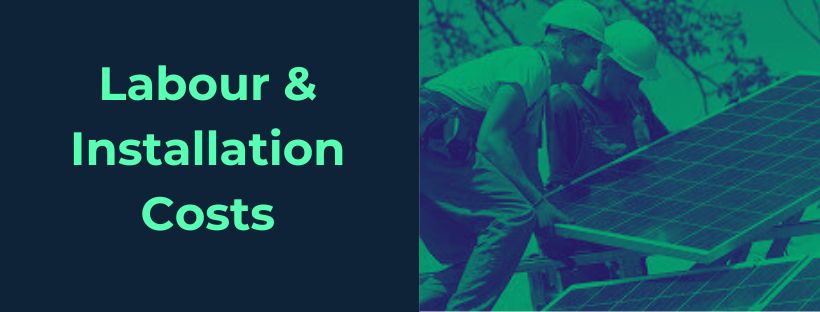
According to the Independent, the typical range is about £600 to £1,200, assuming a two-person team is doing the job. Mind you, they're not popping over for a cuppa; they're installing a solar panel system! This aligns with data from The Eco Experts, who suggest labour costs could be anywhere from £900 to £2,200.
On a day-to-day basis, you're looking at around £300 per day for the installation, as per Checkatrade. The Federation of Master Builders, however, reckon it's between £300 and £500 per day per installer. So, if your installer likes to take it slow, you might want to keep a keen eye on the clock!
As for the overall score, in 2024, a typical 3.5kWp solar panel kit might set you back around £5,500, about as much as a second-hand Mini Cooper. Now, if labour costs make up 10-30% of that figure, as The Eco Experts suggest, you're looking at a labour bill of about £550 to £1,650.
Now, these figures aren't set in stone like the Tower of London. They're just estimates, and the actual costs can vary based. Always remember to do your homework and check with your installers for the most accurate figures.
On average, you'd be looking at about £300 to £500 per person per day. Now, considering an average 4kW system generally requires one to two days to install, that's your first chunk of change right there.
But it's not just about getting a panel and popping it on the roof. The size of the system plays a major role too. It's influenced by your energy consumption and the available roof space. If your house is more of a Downton Abbey than a cozy cottage, or if your washing machine is running more often than the local marathoner, you'll need a larger system, which means more time, more labour, and yes, more cost.
And let's not forget the type of panels. Going for polycrystalline panels can affect the installation time and, in turn, the labour costs.
Material costs in this case, typically falls somewhere between £2,100 to £5,000. From the cosf of solar panels to the mounting systems and inverters, plays a key role in the final dish.
The solar panels have a price tag that's part of this overall cost. The mounting systems and racking which secure the panels to your roof or ground, usually cost between £600 and £2,500.
Lastly, we have the inverters - the secret sauce. They convert the direct current (DC) generated by the panels into a usable alternating current (AC), and typically range from £1,000 to £3,000.
So, while the upfront costs might seem high, remember that you're cooking up a recipe for sustainable energy that will serve up savings in the long run.
When it comes to installing solar panels, business costs can be as unpredictable as British weather, typically ranging from £1,700 to £3,900. These costs encompass all those behind-the-scenes details - those pesky, persistent costs that keep the lights on.
You can't just focus on the solar panel system size and the energy consumption, much like you can't ignore a rainy forecast when planning a picnic. These business costs are a vital part of your financial estimate for solar panel installation.
So, think of business expenditure, system size, and energy usage as a trio of factors that go hand in hand to give you the overall cost. It's up to businesses to smartly stir these components together to ensure their solar panel installation isn't an economic downpour but a ray of financial sunshine.
You know that feeling when you're trying to assemble furniture and realise it might have been worth paying for professional assembly? That's a bit like the labour costs for installing solar panels. These costs typically range from £900 to £2,200, and can make up a significant chunk of the total installation expenses.
Much like how the complexity of your flat-pack furniture can affect assembly time, the system size and energy consumption influence these costs. And don't forget to factor in the cost of electrical work, which can range from £600 to £3,000, depending on how many trips round the roundabout your electrician has to make.
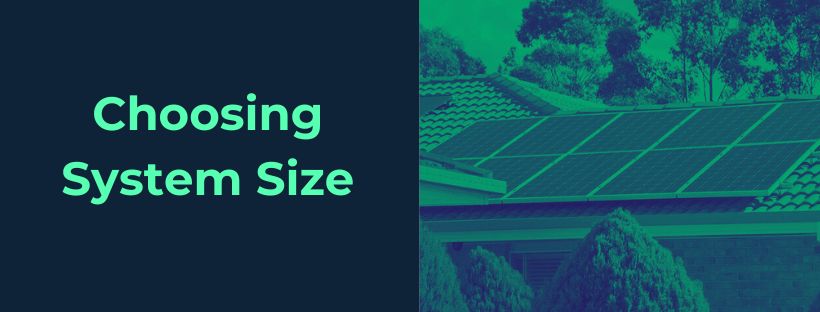
The price tag on your future solar sparkle depends heavily on how large you want your system. According to our pals at Solar Guide, an average Joe in the UK could be parting ways with £4,000 to £6,000 to install a 3kW solar system. Touch steep, I hear you say, but hold that thought, my friend.
Being a green superhero isn't cheap, but one flash of your energy bill and you'll be strutting like a peacock on payday.
The size game does matter here - bigger system means higher upfront cost, but pumps up your future savings.
Ready for the twist? The room you've got up on the roof and how efficient your new solar panels is are equally important in throwing around numbers. There's a study saying a 4kWp system (simply put, it's pretty beefy) could whip up about 3,800 kilowatt hours of electricity annually in sunny South England.
Let's not forget that space is gold dust, especially when you're dealing with a typical cosy English terrace. They say you'll need roughly 10 square metres of roof for a 1kWp system.
The magic word here is 'size'. Too big and you're burning pound notes, too small and you're left in the dark, literally!
Now, the average UK home uses around 3,100 kWh of electricity per year, okay?
That gives you an idea of your own needs.
So finding that sweet spot between generating the energy and not emptying your bank account is crucial.
The right size means making the most of that great expanse of roof you've got and the cash you've got in your pocket.
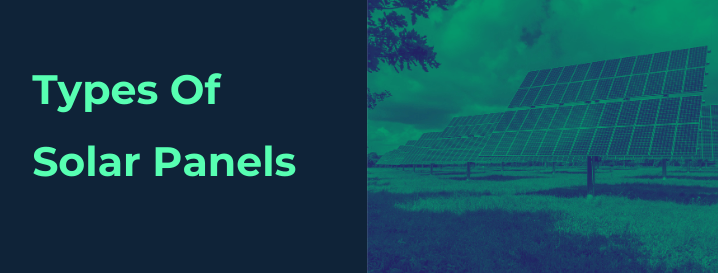
There are a ton of solar panels out there, like the ever so popular monocrystalline and polycrystalline.
So, keep a sharp eye, because the type of solar panel matters heaps when estimating your total installation costs.
Believe it, the cost ofsolar panels you go for can stir your budget up.
But don't just take my word for it.
According to a survey by Solar Guide, the average cost in the UK for installing a solar PV system rumbles around £6,000 to £8,000.
So, to keep your eyes on the prize - and by prize, I mean budget - it's key to understand how different solar panel types might flip your bill like a pancake on Shrove Tuesday. Because, let's face it, none of us fancy any surprises, especially when it comes to our money!
| Panel Type | Average Cost per Panel (£) | Efficiency (%) | Lifespan (Years) |
|---|---|---|---|
| Monocrystalline | £7861 | 20-22%3 | 25+3 |
| Polycrystalline | £5002 | 15-17%3 | 25+3 |
| Thin-Film | £4002 | 10-12%3 | 20-253 |
Monocrystalline panels are made from a single, pure crystal structure. They're the most efficient, but also the most expensive.
Polycrystalline panels are made from multiple crystal structures. They're less efficient than monocrystalline panels but also less expensive.
Thin-Film panels are made by depositing one or more thin layers of photovoltaic material on a substrate. They're the least efficient and least expensive.
The costs given are per panel. The total installation cost would vary depending on the number of panels installed, which is typically determined by your energy needs and the available space.
The average price range for solar batteries is usually between a cool £2,000 on the thrifty end, and a steep £10,000 if you fancy a splurge.
This is your gizmo for storing any overflow of solar energy that you might generate but not use immediately.
Good news is, daytime overproduction isn't wasted!
You need to get your head around these solar panel inverters.
Why? Well, they're the hidden stars of your solar setup, converting the DC power from your panels into AC power for your appliances - enabling your tea-making escapades!
These inverters come in three thrilling flavours: string inverters, microinverters, and power optimisers. Sounds like it could be a rock band, right?
Each one has its own perks, so you need to choose the one that tickles your fancy - and your kettle!
Costs can sway, depending on factors like your solar system's size and type and the inverter's brand or model.
To put it in perspective, you could shell out anywhere between £500 and £1,000.
You’re going need to factor in maintenance and repair costs as well.
The usual suspects in routine maintenance are cleaning, inspections and replacing any components that are feeling a bit worse for wear.
Repair costs, on the other hand, are a bit hard to pin down as they can vary depending on the damage and what your warranty covers.
Now, I'm not trying to scare you off here. Staying on top of these things not only helps your solar panels live longer (who doesn't want that?), but it can also save you a pretty penny in the long run.
Yes, we're both well aware that the price of solar panels is about as friendly on the wallet as buying pints in London. But remember the age-old motto - you have to spend money to make money?
Trust me, it can be well worth it in the end.
Now, hold on to your seat belts because I've got some news that'll take the pressure off your bank balance, and no, it doesn't involve any funny business.
Our governmental higher-ups saw the light (literally) and introduced the Smart Export Guarantee (SEG) in 2020. What this means for you and me is that energy suppliers with over 150,000 customers need to pay you for any extra electricity you send back to the grid from your solar panel kit.
As per GOV.UK, these tariffs can't be less than nada, but they do change between suppliers. Some even shell out as much as 5.6 pennies for each kWh!
To sweeten the deal even further, homeowners can benefit from grants to cover the installation cost. Take the Green Homes Grant Scheme, for instance. This nifty little initiative was developed to make daring endeavors like solar installations more affordable for us regular Joes and Janes.
Unluckily, it's on a rain check right now, but there are still plenty of other schemes to take advantage of.
Like with anything else, don't miss the small print on these government goodies. Getting your head around the red tape and eligibility criteria can be tough.
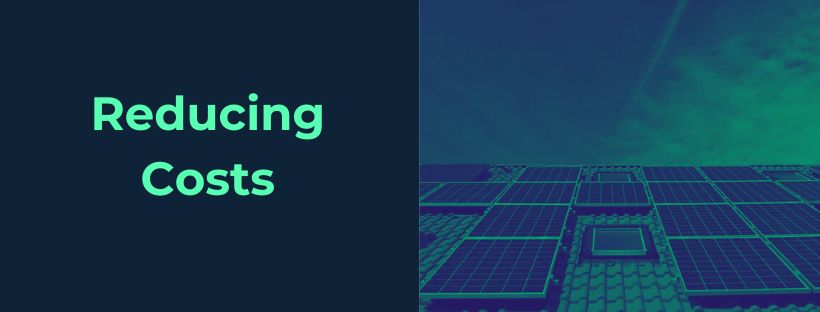
Naturally, we have a few tips up our sleeve to help make solar more affordable.
Ready for it?
First, consider the size and type of your solar panel system. Bigger isn't always better. Do the math, and figure out what's the best bang for your buck.
Secondly, shop around. Just like getting the best price for your holiday, different installers offer different solar quotes.
Compare, contrast, rinse and repeat until you get the most reasonable price.
Thirdly, don't be shy about asking for discounts or promotional offers. Remember, you miss 100% of the shots you don't take.
Leveraging your Smart Export Guarantee (SEG) payments, those sneaky little bounties for feeding electricity back to the motherland, is all about getting your head around how to shimmy all that extra juice your panels are producing onto the national grid.
These SEG payments a can be real game-changer when it comes to the overall cost of your solar panel shenanigans. In fact, according to our dear friends at the Energy Saving Trust, most folks can expect to make around £100 to £150 annually off these payments.
That might not sound like a lot, but remember, we're talking about your roof earning its keep, chipping away at that initial installation cost like a squirrel nicking away at a stubborn nut.
Every little helps, am I right?
The current UK solar energy scene is simply full of opportunities!
According to our pals at Solar Energy UK, as of 2024, the UK's solar capacity knocked it out of the park with a hefty 15 gigawatts (GW) [1].
And let's slap some extra sunscreen on that, because over the past year, solar capacity put on a sunny 6.7% growth, smashing the record with a solid 18,808 installs in June 2023 [1].
Clearly, there's a new trend among us Brits, and it's all about catching rays - solar ones that is!
Impressive numbers, right? But what's the deal for you? Well, given Uncle Sam's current handouts, plus solar panel prices rolling down the hill since 2011, making it a cracking time to get on the solar powered bandwagon.
Sources: [1]
| Year | Average Cost (£) [1] | Estimated Payback Period (Years) [5] |
|---|---|---|
| 2014 | £7,000-£9,000 | 12 |
| 2015 | £6,500-£8,500 | 11 |
| 2016 | £6,000-£8,000 | 11 |
| 2017 | £5,500-£7,500 | 10 |
| 2018 | £5,000-£7,000 | 10 |
| 2019 | £4,500-£6,500 | 10 |
| 2020 | £4,000-£6,000 | 9 |
| 2021 | £3,700-£5,700 | 9 |
| 2022 | £3,500-£5,500 | 8 |
| 2023 | £3,500-£5,500 | 7-10 |
Please note that these are average costs and payback periods and can vary based on factors such as location, system size, and energy usage. The costs include the price of the panels themselves, as well as installation and grid connection fees. The payback period is the time it takes for the savings from reduced electricity bills and income from tariffs to equal the initial investment.
Exactly when do solar panels start paying for themselves with all those energy savings?
Your very own financial fairy godmother in this situation is known as the 'payback period'. Bit of a big word, isn't it? But all it does is tell you how long it takes for your solar panels to recoup their startup costs with the money you save on energy bills.
Knowing your payback period helps you get a handle on the return of your investment.
Now, estimating the moment your solar panels cover their costs involves a little maths.
You need to think about the installation cost, how much energy you use, and how much juice these panels will produce. It's like predicting when you'll cross that marathon finish line considering your pace and distance.
Understanding your payback period serves up a pretty picture of the cash you're plonking down and when you'll start enjoying the fruits of your investment.
Certainly, understanding the payback period for solar panels involves considering a variety of factors. These factors include the cost of the system, the amount of sunlight your location receives, your home's energy consumption, and any incentives or tariffs you may be eligible for. Here's a table summarising some typical scenarios:
| Scenario | System Size (kW) | Average Cost (£) 1 | Annual Energy Yield (kWh) 2 | Electricity Price (p/kWh) 3 | Feed-in Tariff (p/kWh) 3 | Payback Period (Years) 3 |
|---|---|---|---|---|---|---|
| High Sunlight, High Energy Use | 4 | £6,000-£7,000 | 4,000 | 16 | 5.5 | 7-9 |
| Average Sunlight, Average Energy Use | 4 | £6,000-£7,000 | 3,400 | 16 | 5.5 | 9-11 |
| Low Sunlight, Low Energy Use | 4 | £6,000-£7,000 | 2,800 | 16 | 5.5 | 11-13 |
The annual energy yield is an estimate of how much electricity the system will produce in a year. The electricity price is the amount you would pay per kWh if you were to buy electricity from the grid, and the feed-in tariff is the amount you would be paid for feeding excess electricity back into the grid.
Firstly, we need the total cost of your solar panel system, including installation.
Next, you need to know how much electricity your solar panel system will produce annually. You can usually find this information from your solar panel supplier or installer.
The third piece of information you need is your electricity rate - that's how much you pay for electricity from the grid.
Once you have all these numbers, you're ready to start calculating. Here's the recipe:
Divide your annual electricity production by your electricity rate. This gives you how much money you'll save every year by using solar energy instead of buying electricity from the grid.
Now, divide your total system cost by your annual savings. This will give you the number of years it will take for your solar panel system to pay for itself through savings.
That's it! You've just calculated the payback period for your solar panels.
If you need a helping hand, why don't you take our payback period calculator a spin.
Ring up one of the best installers and let them do the job instead. They’ve got the know-how, the fancy tools, and (unlike yours truly, I must admit) a good record for avoiding toe stubs and ladder tumbles while getting your panels up and running.
Rules for installing solar panels vary based on your location and local regulations. These include acquiring permits, adhering to building codes, and following safety standards.
It's crucial to collaborate with a accredited installer who can navigate these rules.
Additionally, explore any incentives or tax credits available for solar panel installation in your area.
Installing solar panels may seem expensive upfront, but it's important to consider the long-term benefits. The cost depends on factors like home size, location, and energy needs.
Additionally, government incentives and rebates can help offset the installation cost.
Installing solar panels involves placing them on your roof or in a sun-soaked area.
The battery can be set up either indoors or outdoors, based on your convenience and space.
It's crucial to engage a professional installer for safe and correct installation.
Professionals also handle necessary permits and inspections, ensuring a smooth, compliant setup.
Remember, solar panel installation isn't a do-it-yourself task, but requires expert management.
Going solar isn't just about buying the panels. You also need to factor in extra costs such as roofing works and potential electrical system upgrades.
Don't forget ongoing maintenance, like cleaning and repairs.
To avoid unpleasant surprises, ask for a detailed solar quote from a professional installer before you commit.
This quote should include all these additional costs to give you a clear picture of the total investment.
There are various payment options for solar panels, such as cash, loans and finance.
Paying upfront with cash can offer long-term savings, while finance allow for spreading out the installation cost over time.
For a typical residential installation, prices range from £5,000 to £8,000. Get multiple solar quotes and do your research before committing to a system.
The cost of solar panel installation in the UK can vary depending on factors such as system size and panel type.
On average, it takes around 7-20 years to recoup the cost of installation. However, government incentives and tax credits can shorten the break-even period. Calculate potential savings before investing in solar panels.
Your break-even point for solar panels depends on factors like installation costs, electricity rates, and energy usage.